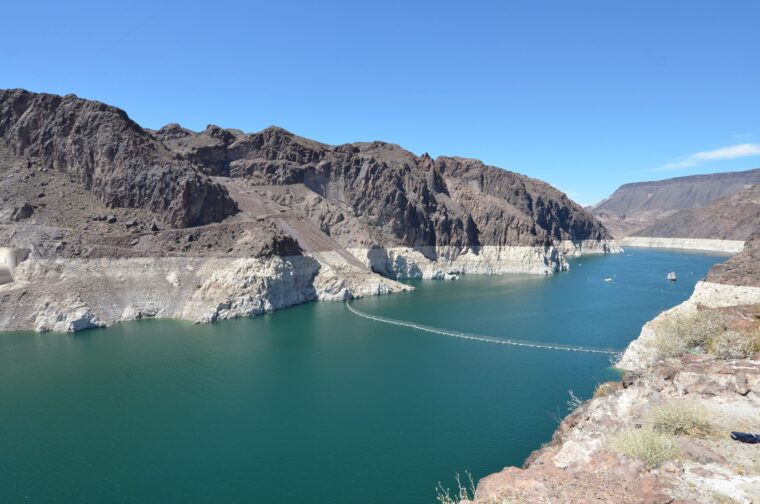
America has water problems. Water stress can be found in almost every state. New Mexico falls into the category of extremely high ‘water stress’ for multiple reasons, including climate change, limited rainfall and reduced volume of water in both the Rio Grande and Colorado rivers, which are major water resources for the state. Arizona, California, Nebraska and Colorado also fall into the category of water stressed states. These states struggle with high water demands brought on by droughts, pollution, population growth and extreme needs from industries like agriculture and manufacturing. Many other states that are fortunate to have adequate freshwater resources are experiencing water stress because of outdated infrastructure or mismanaged water resource planning.
Approximately half the world’s population experiences water scarcity on too-regular a basis, and the number of people affected by water scarcity is expected to grow as populations increase and as weather patterns become more unpredictable and extreme. Many state leaders, however, are aggressively planning water infrastructure projects to increase water supply or provide more efficient use of available resources to curb the very negative impacts of water stress.
The Upper Thompson Sanitation District in Estes Park, Colorado, will soon benefit from a $127 million water infrastructure project that will deliver a new water reclamation facility. The project will also include the construction of two lift stations, which will be designed to replace the district’s aging 50-year-old wastewater treatment infrastructure.
Upgrades are essential for regulatory compliance and also because upgrades are needed to enhance water quality in the Big Thompson River watershed. The reclamation facility is a critical component of delivering drinking water to downstream communities. When completed, the facility will contribute to water sustainability by preventing water pollution and increasing the efficiency of wastewater treatment. Construction is scheduled for late 2024.
In Arizona, a wastewater treatment plant in Phoenix will undergo a $50 million rehabilitation upgrade project. The effort will focus on modernizing critical infrastructure, including primary sedimentation, aeration and secondary sedimentation basins. Because of population growth, water demand has increased significantly, and the plant must be brought into compliance with stringent water quality regulations.
The plant must manage growing demand from the cities of Phoenix, Glendale, Mesa, Scottsdale and Tempe. When the project is completed, the plant will have integrated advanced water purification technologies that will produce 60 million gallons of potable water daily, enough to supply drinking water to 200,000 households. That will keep citizens from being completely dependent on external water sources, such as the Colorado River. Pre-construction and design phases are set to begin soon. Construction is scheduled for 2025.
City leaders in Santo Domingo Pueblo, New Mexico, will oversee a transmission waterline replacement project designed to enhance the area’s drinking water infrastructure. The $15.8 million project will expand water storage and supply capacity to meet growing demand and ensure a reliable source of clean drinking water for both residential and commercial use. Improvements include replacing existing transmission waterlines with larger pipes and incorporating flow control measures to address hydraulic issues in the system. By upgrading the transmission system, the internal pressure will be reduced to ensure fewer pipe breaks and increased fire flow capacity. New wells will be installed to provide additional storage and backup capacity to address both fire flow and emergency water needs. The project will be completed in four phases over the next five years. The first phase will be the design and construction of approximately 4 miles of water transmission lines. The next phases will include implementing a Galisteo tank flow control system and the installation of two water tanks. Remaining phases will include the expansion of approximately 3,000 linear feet of distribution water main, installing a 500 gallon-per-minute well and modifying the existing wellhouse. No construction timelines have been announced yet.
Municipal leaders in Medford, Oregon, will oversee a comprehensive $300 million project to upgrade the city’s regional water reclamation facility. The project is critical because it will ensure an ability to meet escalating need for water that has resulted from significant population growth.
The facility currently treats 18 million gallons of wastewater per day. The planned expansion will improve treatment processes, upgrade the infrastructure and equip the plant to efficiently handle increased wastewater capacity. As part of the upgrade, the facility will also modernize its primary and secondary treatment systems, and that work will include the installation of advanced disinfection and filtration technologies to ensure standards compliance. The project is currently in the pre-construction phase, and solicitation documents are expected soon.
A water reclamation facility in League City, Texas, will soon undergo a significant expansion that is required to accommodate the growing wastewater treatment demands of the city’s rapidly expanding southwest sector. The $90 million project will double the facility’s capacity to deliver only 4 million gallons of water daily.
The project will call for extensive upgrades to existing infrastructure and the addition of treatment components to support increased capacity. Improvements will be designed to ensure operational efficiency, reduce the risk of wastewater overflows and maintain regulatory compliance as the city’s population continues to grow. The expanded water reclamation facility will provide the southwest sector’s anticipated population growth and provide water that is needed for commercial developments.
Currently, the project is in the design phase, and construction will be launched in 2025. The expanded facility is scheduled for completion by 2028.
Water projects very similar to these are on drawing boards throughout the U.S., and the country’s water vulnerability will not be erased quickly. Construction, engineering, planning, technology and equipment will be in high demand for at least the next decade.
Photo courtesy Steven Lek
The post Water infrastructure projects are abundant as cities and states face shortages appeared first on Government Market News.
